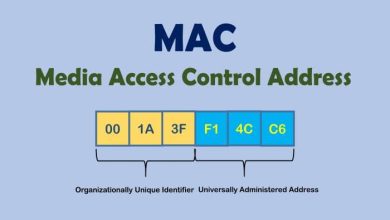Selecting the Right Platform: ActiveCampaign vs. Alternative Solutions

Selecting the best platform to maximize campaigns is a constant issue for organizations in the dynamic world of digital marketing.
These days, automation, customer relationship management (CRM), and email marketing are essential tools for modern businesses.
Out of all the options, ActiveCampaign is a strong competitor.
Nonetheless, companies looking to make well-informed judgments on their marketing tactics must know how they stack up against ActiveCampaign competitors.
Comprehending ActiveCampaign
A comprehensive platform, ActiveCampaign incorporates CRM, sales automation, email marketing, and marketing automation.
Its easy-to-use functionality and straightforward design make it an appealing option for businesses of all sizes. The platform offers several noteworthy features, including:
- Automation: Users can easily design sophisticated workflows with ActiveCampaign’s automation features. Marketing activities are made easier by automation, which ranges from tailored follow-ups to triggered emails based on user behaviors.
- Email marketing: ActiveCampaign’s segmentation, A/B testing, and customizable templates enable marketers to create compelling email campaigns that are suited to particular audience segments.
- CRM Integration: The platform’s CRM features provide smooth client interaction management, guaranteeing tailored communications and effective sales procedures.
- Analytics and Reporting: Comprehensive reporting tools give firms an understanding of how their campaigns are performing, allowing them to make data-driven decisions and improve their tactics.
Evaluating Alternative Solutions
Although ActiveCampaign is excellent in many areas, other platforms provide special features and functionalities to meet particular business requirements.
This is a comparison study:
1. HubSpot
Renowned for its comprehensive marketing platform, HubSpot provides features akin to those of ActiveCampaign in addition to extra tools for social media, SEO, and content management.
Its numerous instructional resources and easy-to-use interface make it a compelling choice, particularly for companies looking to use inbound marketing methods.
- Advantages: A comprehensive range of marketing tools, intuitive UI, robust analytics, and a heavy emphasis on inbound marketing approaches.
- Considerations: Greater price ranges, possible intricacy for smaller companies, and the learning curve needed to become proficient in all of its features.
2. Mailchimp
Reputed for its intuitive layout and simplicity of use, Mailchimp specializes in email marketing.
It is appropriate for companies just getting started with email marketing because it provides a large selection of templates, A/B testing, and list segmentation options.
- Advantages: Simple-to-use design, small business-friendly price, and a significant emphasis on email marketing features.
- Considerations: Fewer CRM integrations, less automation power than ActiveCampaign, and scalability issues for expanding companies.
3. Sendinblue
Sendinblue bills itself as a one-stop shop for marketing solutions, providing live chat, email and SMS marketing, and CRM features.
Its low cost and simplicity of usage make it unique.
- Advantages: Reasonably priced plans, user-friendly interface, multichannel marketing features, and a small business-friendly free plan are all features.
- Considerations: Less sophisticated CRM functionality, fewer automation options than ActiveCampaign, and scalability issues for larger businesses.
Customizing the Option for Your Company
Beyond features, it’s critical to think about scalability, usability, and alignment with your company objectives:
Scalability
Due to their more extensive feature sets, ActiveCampaign and HubSpot may be a good fit for companies with large marketing requirements and ambitious growth goals.
Meanwhile, because of their price and ease of use, Mailchimp and Sendinblue might be the best places for smaller enterprises to get started.
Ease of Use
Sendinblue’s simple setup or Mailchimp’s user-friendly interface may initially be more favorable for companies with smaller teams or less experience.
On the other hand, spending money to become proficient with the features of more feature-rich systems like HubSpot or ActiveCampaign may pay off handsomely in the long run.
Budget & Cost-Effectiveness
Although at first glance ActiveCampaign may seem more expensive, its extensive toolkit may provide a better value for companies needing sophisticated automation and CRM integration.
Features and price tiers need to be evaluated to ensure optimal resource utilization.
Conclusion
In the dynamic realm of digital marketing, selecting the right platform is crucial for business success.
Although ActiveCampaign provides an extensive toolkit including email marketing, CRM, and automation, other options such as HubSpot, Mailchimp, and Sendinblue offer unique functionalities to meet different company requirements.
The decision between ActiveCampaign and its competitors ultimately comes down to comprehending the particular needs of your company, and your goals for growth, and striking a balance between functionality, usability, and affordability.
Businesses will be better equipped to make decisions that support their marketing strategy and promote long-term growth if these aspects are thoroughly evaluated.



